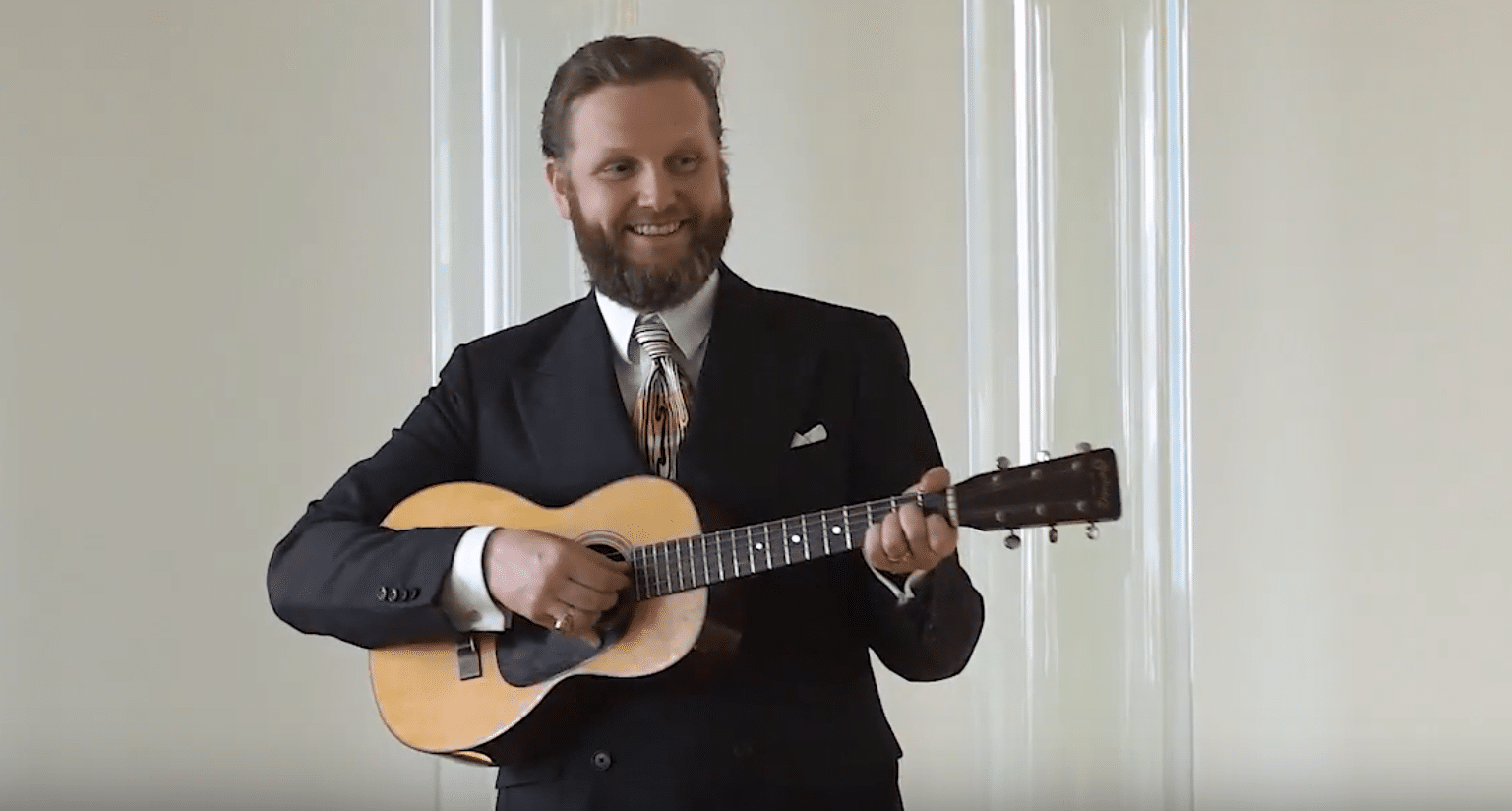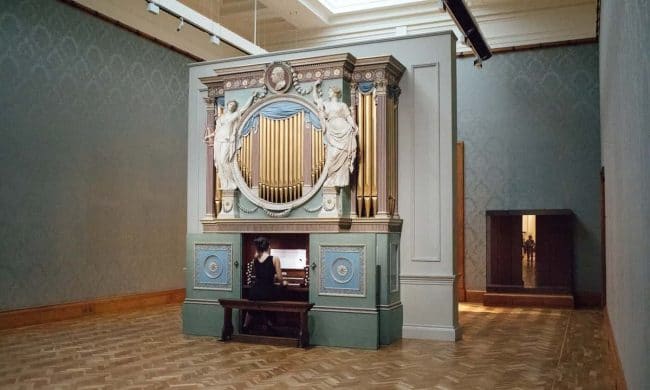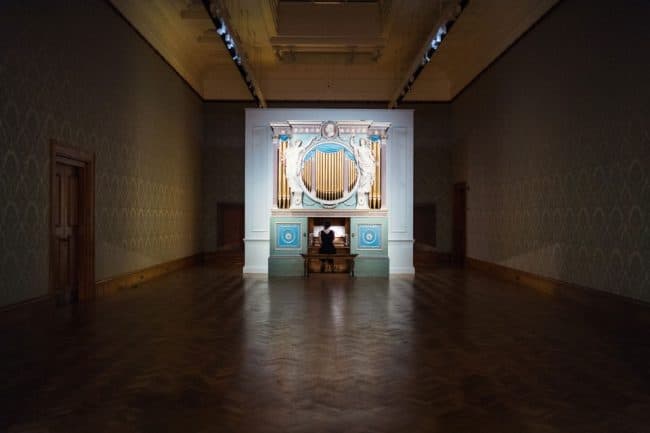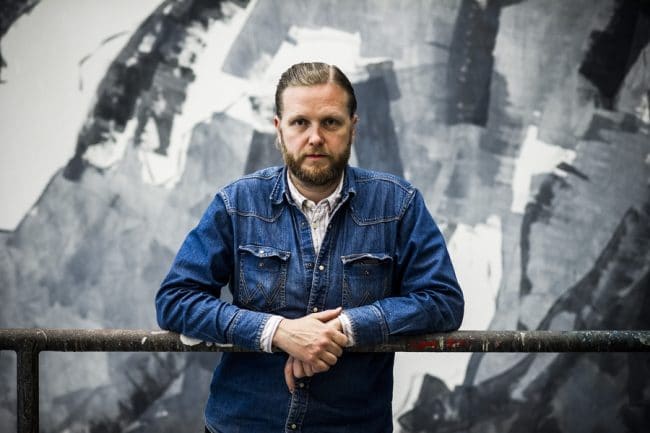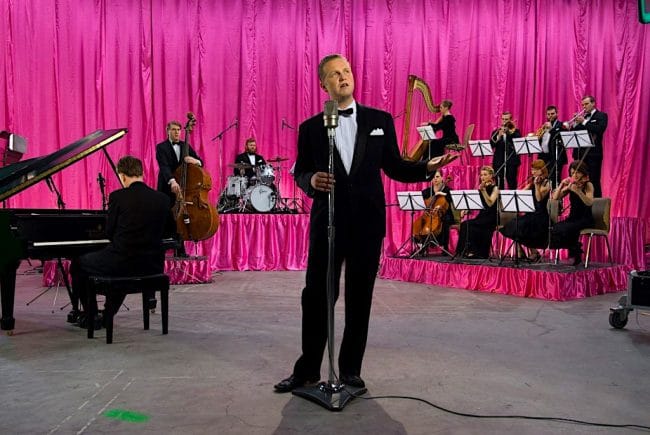You are now well known for your multi-disciplinary art installations, often based around music. Your latest work is ‘Sky in a Room’ now showing at the National Museum of Wales? In they interview can you tell us briefly how this came about and what we can expect?
This is a piece that has been slowly being born. I got the specific idea when I was doing visits for my work with Artes Mundi in Cardiff two years ago [In 2015, Kjartansson was given the £30,000 Derek Williams Award, enabling the National Museum of Wales to purchase artwork]. It was then I saw the space with just the organ and I thought ‘wow’!
This is the wonderful chamber organ commissioned by Sir Watkins Williams Wynn in 1774.
Yes! This was everything I like – I love rococo and I love organs and I also loved that space and the paintings in that space. I was with Karen Mackinnon, the director of Artes Mundi, and I had the idea that it would be great to empty this room of paintings and have an organist repeatedly playing this song “Il Cielo In Una Stanza” (The Sky in a Room). This is a gorgeous song about the transformation of space and in the end all art is about the transformation of space. In my opinion this is the essence of all visual artworks, whether it is a Rembrandt or a contemporary installation with smoke in the room.
You are of course from Iceland. How influenced do you think you are by your origins and perhaps the folklore?
I think a lot. Icelandic people are very spiritual and you feel stones have a story to tell. My grandmother says ‘I don’t believe in elves, just in ordinary ghosts’. I think this is a very good example of the attitude – well of course you believe in ghosts but not in elves! I think this idea of spirituality in nature is not so special – I think once everybody had it, but perhaps we are the very last Europeans who still have it, maybe just in eastern Europe people still may have these folkloric beliefs? It is like the Aboriginal people where the land is always telling you stuff, a culture that is based on the spirituality of the land.
So have grown up with this idea that everything is art, everything is possible?
Yes, maybe it’s this being raised in Iceland. For me like Bjork is a special person: she’s a kick-ass motherfucker from the punk scene! I saw here first when I was 6 – like wow – a mega punk rocker! Living in Reykjavik with this ongoing music scene it made me feel that anything goes and that anything is possible. There was this saying that became almost a mantra in art school, “It doesn’t matter what you can do, it matters what you do do.”
I understand that your family are in the theatre [Director Kjartan Ragnarsson and actress Guðrún Ásmundsdóttir].
I was really lucky, my grandfather was a social realist sculptor, and made big statues of things like fisherman all over Iceland. But he was friends with the avant garde scene – his best friend was Dieter Roth and my parents were in the theatre and there were always people learning their lines which I remember was something. I really felt it was like a position of privilege – one was always around art and I think art makes one very happy – and I was always very happy.
I wanted to ask about repetition, because a lot of your art is about this, and you had the influence of theatre which is all about repetition – learning of lines, rehearsals, shows.
Yes. I was also an altar boy at catholic church where you repeat something over to give spiritual meaning. Then there was practicing in a band [Trabant] – making records where we were playing the same songs over and over for 5 years! So there is the repetition that comes watching and releasing music and theatre and also like religion added to it.
I heard that this repetition idea started with a Dylan song ‘All the Tired Horses’. So I Googled this and top of the search it came up as first in a list of Bob Dylan’s 10 worst songs! So I’m guessing there are people who don’t like repetition. Were you worried about creating a love/hate thing?
Haha. That’s funny. Definitely! And this is why it can exist with any meaning. I think its so important that some people don’t like my work or hate it – this is something I look at as a compliment – maybe I perhaps hate them also in my heart! I’m working with stuff that is very cheesy and sentimental – a lot of stuff that I find difficult myself – but the truth is, I find it really interesting, so I continue with it.
The queen of repetition is of course Marina Abramovic – I could also imagine someone like Bruce Naumann being an influence. Is that the case? Are there others?
Totally – I think it all has its roots in feminist art – like the body is a tool in art – as with Carolee Schneeman, Vito Acconci and Chris Burden. At college I was drinking this stuff in and I was thinking it would be useful to use. I thought it would be good to do this stuff that was always forbidden in performance art. I was taught that you can do everything but not be theatrical about it: “It is art not theatre” was the mantra. But its always good to explore things that you have been told is not a good idea!
I see the influence of film and TV also – perhaps the Red Room from Twin Peaks. Are a fan of this Lynchian world of alternate and strange realities?
Yes, absolutely – the Red Room is such a good example of creating something that is real but at the same time super unreal – it feels like you are walking in to a scene from a movie but at the same time it’s super real. I don’t see how you can be a contemporary artist right now without having David Lynch screaming a little bit at your back! Maybe I became so interested in the realness of the unreal when you are drenched in theatre and you realise that nothing is real. I always find that you are making something fantastical but it is always real at the same time. I find that somewhat fascinating – this illusion of theatre or cinema and this has been a big influence on me.
At the core seems to be the music – when you are creating work does it start with music and then work on to place and so on?
It depends. At the moment I have to make paintings for example. It’s different and depends what turns me on. As a music buff this is something that is constantly vibrant in me and things very often come from musical inspirations – like Sky in the Room. I want to make a portrait of a songs – like trying to make a song in to something sculptural.
So it becomes something like a living sculpture. A sort of Gilbert & George’s ‘Underneath the Arches’ [a repeating song first performed in a London Gallery in 1970 in metallic paint, sometimes for whole days] .
Yes, Gilbert & George, but that’s fantastic! I didn’t even know about Underneath the Arches – I was just so inspired by their drinking piece!
You always have humour, mixed with perhaps farce, tragedy or strangeness. Is this deliberate when creating the work?
I think that it often comes about from so many art books which are a joke gone too far. Bjork once said that a song for her starts as a joke and then she sculpts the joke away. Like a marble block is a joke and then you sculpt it away and you have the artwork.
Perhaps is all life is a joke?
I think so – and I kind of have two sentences that are always in my head. Montesquieu who said seriousness was the shield of stupidity and on the other hand Halldór Laxness who said nothing was beautiful without being serious.
You are now doing some pretty big shows like the Hirschorn, in Washington DC and the Barbican in London. Do you sometimes look back and think ‘wow!’ ? Did you ever dare dream of holding shows in places like these and does it surprise you that the public has such a strong affinity with your work?
Well, no. It just happened – I had of course dreams of ‘making it’. I’ve been sort of very calm about all this stuff but it feels really really good and I’m surprised and happy but its not like part of an old ambition – luckily. I guess to be honest I always had this [growls], a drive to be accepted!
The Sky in a Room is at the Museum Of Wales in Cardiff until 11 March 2018
For more information visit www.museumofwales.com




